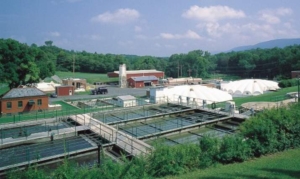
Wastewater Treatment Plant at PSU
Researchers at Penn State University studied the effectiveness of wastewater treatment by tracking the fate of different contaminants. Their goal was to track the compounds through wastewater treatment and at the wells at their Living Filter, a place where treated water is sprayed to undergo additional filtration. The contaminants tracked were acetaminophen, ampicillin, caffeine, naproxen, ofloxacin, sulfamethoxazole, and trimethoprim.
From October 2016 to March 2017, researchers took samples every 24 hours throughout the plant, and monthly water samples were taken at the Living Filter. They found that the soil was acting as a biogeochemical filter to remove some of the contaminants. The treatment plant was most effectively removing caffeine and acetaminophen, and other compounds varied seasonally. In the winter, for example, soil microbes are less active and therefore more compounds ended up in the water.
These compounds are considered pollutants, but it is largely unknown how they affect organisms and even human health. They have been found in surface, ground, and drinking water samples, and newer technology allows scientists to test for even the smallest amounts of these compounds. Research has shown that even small incidences of these compounds in the environment, even as low as parts per billion or trillion, can have effects on fish and amphibians.
